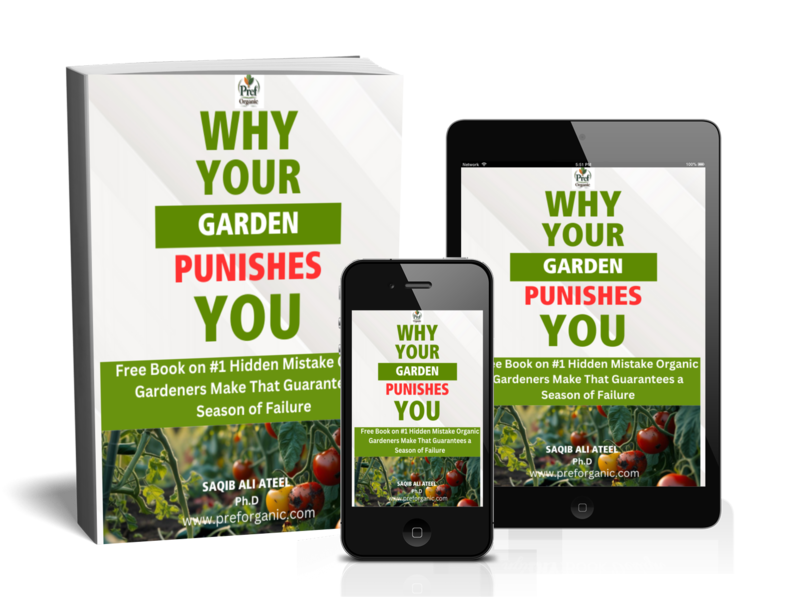Reduce Pesticide Exposure from Food: Simple Organic Swaps
That Matter
There’s a reason an organic apple feels oddly satisfying, like a tiny win in a world full of processed shortcuts. It’s not just about food anymore—it’s about protection. Your health. Your family’s. And yes, even your sanity. That’s what I uncovered on a journey that started on my grandfather’s farm in South Punjab and led to decades of research in fields, labs, and government offices.
I didn’t grow up reading wellness blogs. I grew up watching my grandfather raise food the way nature intended—by listening to the land, using fewer chemicals, and never spraying what we were going to eat ourselves. He didn’t use the word “organic.” But everything he did, science is now proving right.
lock of text...
What’s Really on Your Plate?
That innocent-looking strawberry? It might have been doused in more pesticides than you’d believe. USDA reviews and independent studies have found common fruits and vegetables carry residues from synthetic pesticides, fungicides, and even heavy metals.
And those don’t wash off with a quick rinse in the sink.
On the flip side, organic produce consistently tests with significantly lower pesticide loads. It’s not squeaky clean—nothing is—but the difference between conventional and organic isn’t subtle. It’s the distinction between a drizzle and a daily chemical downpour. And over the years, that adds up.
Why Pesticide Residue Isn’t “No Big Deal”
Think of it this way: your liver, kidneys, and gut are on cleanup duty every time you eat. When you constantly feed them trace amounts of pesticide residue, your body has to work harder just to stay balanced.
Reduced exposure means restored capacity.
You may not notice it overnight. But as I’ve seen with my own family—and thousands of consumers I’ve advised through policy and practice—there’s a long-game effect. Less toxic build-up means sharper energy, better digestion, and fewer unexplainable “blah” days. You get your baseline health back.
How to Start Reducing Food Toxins (Without Going Broke)
Let’s be honest—shifting fully organic isn’t realistic for most people. Grocery prices are real, and time is tight. That’s why I recommend the “smart swap” method.
Here’s where I started:
1. Use the Dirty Dozen list. These are the fruits and vegetables with the highest pesticide residue. Apples, strawberries, spinach, and kale are frequent offenders.
2. Start with what you eat most. Can’t afford all-organic berries? Just swap the ones your kids inhale by the bowlful.
3. Prioritize frequency over perfection. If you only eat mangoes once a month, don’t worry about sourcing organic. Focus on the daily staples.
I always batch-wash produce the day I bring it home. Leafy greens soak in cold water before I rinse and dry them. You’d be surprised what comes off even the organic ones. For things like cucumbers or apples, I don’t peel unless I have to. The peel holds nutrients, fiber, and flavor—I don’t want to toss that unless I’m dealing with a residue-heavy batch.
Getting Organic on a Budget—My Personal Strategy
When I started transitioning my own meals, I didn’t run around chasing every “new organic” trend. I focused on what made sense for our table and our wallet.
Apples, berries, leafy greens—those were our first swaps. We ate them almost daily, so that’s where I aimed. I didn’t stress about bananas or onions because conventional options are among the cleanest.
Over time, I found deals. Some weeks I bought what was on sale; some weeks I splurged on things we’d been craving. And along the way, I got everyone involved.
My kids each picked one organic item per trip. They loved pointing out their choice. And guess what? They actually ate it.
Spotting Real Organic vs. Label Trickery
Let’s talk labels for a second—because walking into the produce aisle can feel like decoding a magician’s trick.
“Natural.” “Non-GMO.” “Local.” Sounds good. But these don’t mean “organic”—not by a long shot.
Unless it says “Certified Organic” (typically with a USDA Organic seal or an accredited international logo), there’s no guarantee it’s free from synthetic pesticides or fertilizers. “No spray” or “transitional” might be better than conventional, but unless I can ask the grower directly, I treat those like a toss-up.
For foods high on my priority list (hello, spinach), I stick to the ones with that certified label. No wiggle room there.
How I Mix Organic and Conventional Without Losing My Mind
Let’s kill the idea that it’s all or nothing.
I mix organic and conventional in every grocery run. I just choose where it counts.
Here’s my formula:
- Go organic for: strawberries, apples, spinach, grapes, bell peppers.
- Go conventional for: bananas, onions, avocados, cabbage, sweet corn.
The difference is risk. Pesticide residue clings more to thin-skinned, high-surface-area produce. This doesn’t mean the others are perfect—it just means you’re shifting the odds by swapping where it matters most.
And then there’s the big elephant in the grocery store: ultra-processed food. I avoid it as much as possible. This is where most hidden toxins land: additives, preservative cocktails, artificial coloring.
So if I have to choose between spending more on organic apples or avoiding boxed “fruit snacks” marketed at children? I’ll take the apple every time.
Simple Habits That Quietly Change Everything
I didn’t overhaul our kitchen overnight. Instead, I stacked these small shifts—and watched how they built up to something real.
Here’s what stuck:
- I shop with a “swap list” in my head—top foods I always get organic.
- I wash everything right after buying, not when cooking.
- I rotate produce weekly—different greens, different fruits, different roots.
- My kids help pick, prep, and plate. They now ask if the apples are organic.
- I talk openly about why we make choices. Even my partner—once a skeptic—gets it now.
And when I travel or get stuck with limited options? I don’t beat myself up. Real life happens. It’s not a rulebook—it’s a rhythm.
The Real-Life Benefits You Can Taste and Feel
I didn’t set out to start an organic revolution. I just wanted to feel better. And you know what? I do.
Over the years, with less exposure to chemical foods, I’ve felt more energetic and grounded. My digestion became more reliable. My focus improved. The best part? My family’s health feels less like a lottery and more like a choice.
When I worked in the agriculture and livestock departments, I saw the data. When I headed farm research, I saw the results. Conventional produce carried residues even after washing; organic didn’t.
When I launched my home garden and served that food to my children—I felt the difference.
It’s not about perfection. It’s about reclaiming control.
If food is medicine, then reducing your toxic load is prevention—and prevention is always simpler (and cheaper) than cure.
So next time you're in the store, pause before tossing that conventional apple in your cart. Look at the organic one. Maybe today’s the day you make that one small change.

Subscribe to Download FREE

Download Free
What's New?
-
Organic foods, human health and the environment have shared strings
Organic foods have made a business of more than $130 USD this year. Farmers sell them at a premium while helping the environment and ecosystem maintenance. -
What are fortified foods?
What are fortified foods? How are they different from staple and common everyday foods? -
Baby Organic Food: “To be, or not to be, that is the question”
Baby organic food is free from insecticides, weedicides and residues of synthetic fertilizers thus much safer for babies


